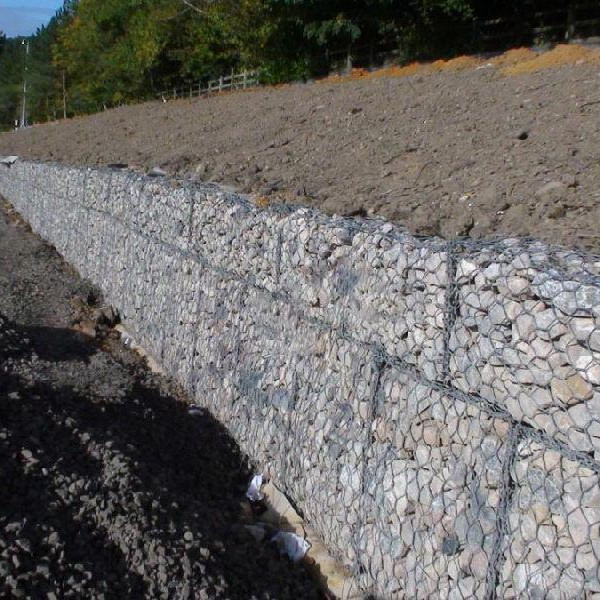ต.ค. . 19, 2024 16:14 Back to list
china stainless steel gabion baskets
The Rise of Stainless Steel Gabion Baskets in China
In recent years, China has witnessed a remarkable surge in the use of gabion baskets, particularly those made from stainless steel. Gabion baskets, traditionally used for erosion control, retaining walls, and landscaping, are cages or boxes filled with rocks, stones, or soil. While these baskets were originally constructed using steel wire, the advent of stainless steel has significantly enhanced their durability and aesthetic appeal.
Advantages of Stainless Steel Gabion Baskets
Stainless steel gabion baskets present numerous advantages over their traditional counterparts. First and foremost is their unparalleled resistance to corrosion. Unlike regular steel, stainless steel contains chromium, which forms a passive layer of chromium oxide on the surface of the metal. This protective layer prevents rust and deterioration even in harsh environmental conditions. Consequently, stainless steel gabion baskets can last for decades with minimal maintenance, making them a cost-effective long-term solution for various applications.
The aesthetic appeal of stainless steel gabion baskets is another significant advantage. They possess a sleek, modern look that can complement diverse architectural styles. This characteristic makes them increasingly popular for use in landscaping projects, urban development, and high-end residential properties. The ability to fill these baskets with a variety of materials, including colorful stones, glass, or even recycled materials, allows for endless design possibilities. Furthermore, their transparency compared to traditional stone gabions enables better visibility, enhancing the visual appeal of public spaces.
Environmental Benefits
Stainless steel gabion baskets also align with sustainable practices. They are made from recyclable materials, and their long lifespan reduces the need for frequent replacements, which ultimately lessens waste. Additionally, the installation of gabion baskets facilitates natural vegetation growth and provides habitats for various species, contributing to biodiversity. Their permeable nature allows for proper drainage and reduces the risk of flooding, making them an environmentally friendly option for managing stormwater runoff.
china stainless steel gabion baskets

Applications in China
In China, the applications of stainless steel gabion baskets are rapidly expanding. They are increasingly employed in civil engineering projects, such as retaining walls and riverbank stabilization, where their strength is paramount. The Chinese government’s emphasis on green infrastructure development has also played a significant role in the growing popularity of gabion baskets. They are utilized not just for functional purposes but also for beautifying public areas, parks, and gardens.
Moreover, China’s bustling urban environment has led to innovative uses of gabion baskets in architectural design. Designers are creatively incorporating these baskets into features such as seating, decorative walls, and even fencing. Their versatility and strength enable architects and landscape designers to explore new design solutions that align with modern sustainability goals.
Challenges and Future Prospects
Despite their many advantages, the adoption of stainless steel gabion baskets is not without challenges. The initial investment can be higher than that of traditional materials, potentially deterring some projects. However, stakeholders are increasingly recognizing their long-term benefits, making them more acceptable in budget considerations.
Looking forward, the future of stainless steel gabion baskets in China appears bright. With continuous advancements in technology and material science, manufacturers are developing even more resilient and attractive designs. Moreover, as urbanization continues and sustainable development remains a priority, the demand for gabion baskets, particularly those made of stainless steel, will likely continue to grow.
In summary, stainless steel gabion baskets are playing an essential role in China’s construction and landscaping sectors. By marrying functionality with aesthetics, they offer sustainable solutions that meet the needs of modern infrastructure while promoting environmental stewardship. Their rise in popularity marks a significant shift towards more durable, adaptable, and eco-friendly construction practices in one of the world’s largest markets. As we move forward, the potential for these innovative structures seems limitless.
-
The Role of Galvanized Gabion Mesh in Riverbank Protection
NewsJun.26,2025
-
The Role of Gabion Basket Raised Bed in Sustainable Gardening
NewsJun.26,2025
-
Quality Assurance of Wire Mesh Gabion Baskets
NewsJun.26,2025
-
Installation Guide for Welded Gabion Box
NewsJun.26,2025
-
How to Choose the Right Gabion Box
NewsJun.26,2025
-
Different Types of Gabion Wire Mesh
NewsJun.26,2025
-
Why PVC Coated Gabion Mattress Is the Best Solution for Long-Term Erosion Control
NewsMay.23,2025






